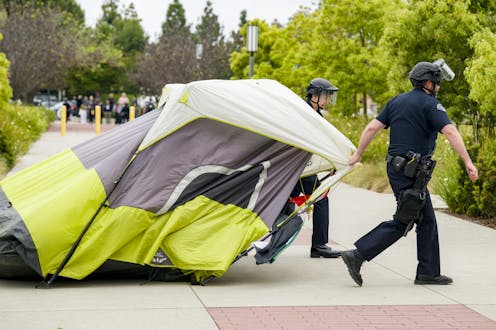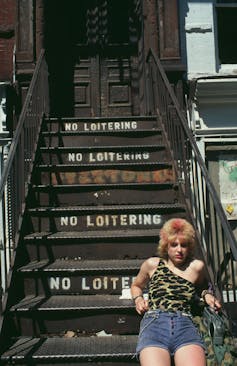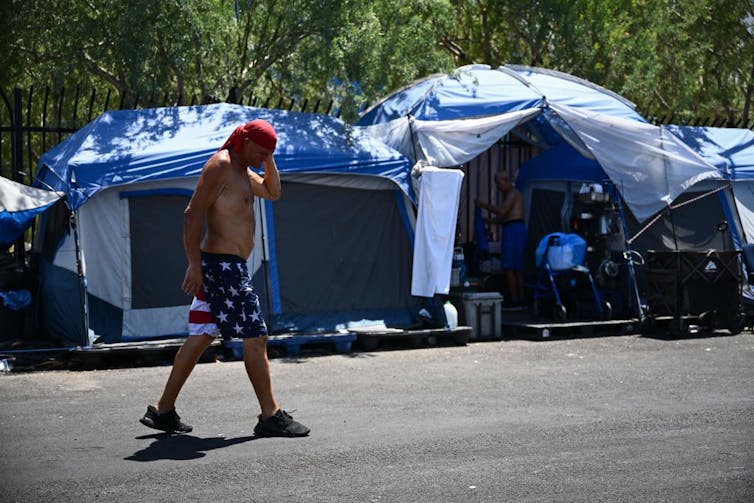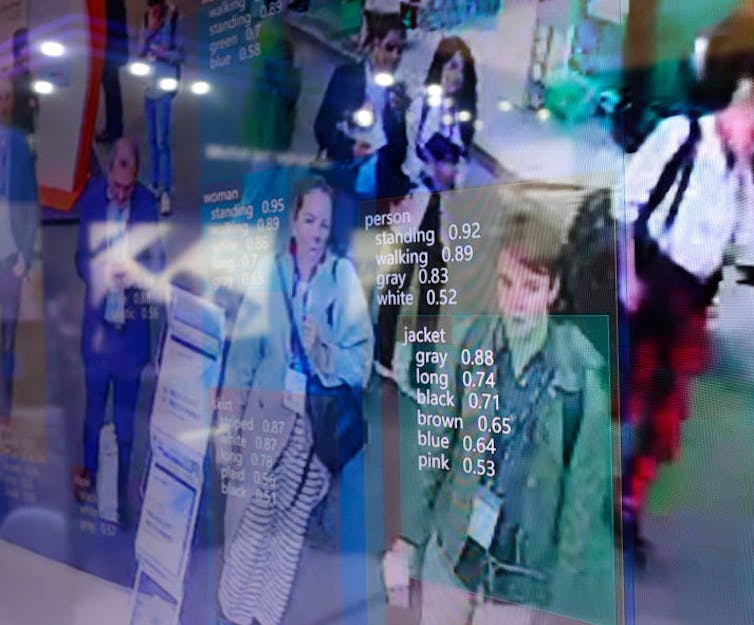Who gets to decide what counts as ‘disorder’?
Framing dissent and poverty as a menace to public order can threaten fundamental rights, particularly when it’s used to justify the deployment of predictive technology.

As a scholar of urban governance and data policy, I viewed the responses to protests on U.S. campuses as about more than threats to academic freedom and freedom of speech.
They are also threats to the fundamental rights of people in public spaces.
The protesters’ tactics, particularly their use of tents in encampments, have brought debates around definitions of public order and disorder to the fore.
Over the past couple of months, students in universities across the country, from the University of California, Los Angeles to the Massachusetts Institute of Technology, have occupied courtyards, classrooms and libraries in solidarity with Palestinians. Students in Canada, Brazil and France have also joined in, setting up encampments to demand changes in their governments’ policies toward Israel due its war in the Gaza Strip.
Most encampments and buildings have been cleared in the name of order or safety – often by the police, sometimes with the use of excessive force. These police responses can have ripple effects in communities far beyond the university walls.
After studying the ways in which technology can be deployed in public spaces , I’ve started to view calls for public order with suspicion. When those in power frame dissent and poverty as disorder, more than freedom of expression is at stake.
Public order versus the ‘right to the city’
As the populations of cities swelled during the 19th and 20th centuries, some residents started decrying the “disorder” of urban spaces.
Whether it was due to loud noises, informal markets or political protests, calls to tame the unruly city grew louder. Everything and everybody seen as undesirable, inadequate or a nuisance could be targeted.

Legislation like Virginia’s Vagrancy Act of 1866 made it a crime to be homeless in cities – a concept that remains in the country’s regulatory framework through state and local loitering laws. These statutes continue to be used to police people of color and the poor.
Other laws that have since been overturned – women being prohibited from using public restrooms, public bathing laws that led to arrests of beachgoers – might sound ridiculous today, but they show how notions of what counts as disorder can change over time.
Laws that police what people can and can’t do in public often conflict with what French philosopher Henri Lefebvre called the “right to the city.”
Laid out in his 1968 book “Le Droit à la Ville,” it speaks to the right of all residents to shape and govern urban life. Decades later, the right to the city was seen as so important that it was included in the New Urban Agenda, which was signed at the United Nations Conference on Housing and Sustainable Urban Development in 2016.
The issue today is that city residents with the least amount of power – the poor, the young, immigrants, people of color – have little say in how cities are governed. And public order laws tend to target them.
Public order crimes refer to the acts that disrupt the running of society. The U.S. has around 117,000 people currently incarcerated under public order offenses.
Although public order is an important element of modern city life, it’s also been used as a mechanism to justify surveillance and control – especially of the most vulnerable communities. Historically, public order has served to organize urban spaces, but also to dampen government criticism and crush dissent.
Last year, for example, the U.K. passed its Government Public Order bill, which gave the government the ability to break up protests deemed too noisy or unruly.
Clearing the camps
Encampments – a military word used since at least the late 1500s – have been in the spotlight not only due to student protesters. Homeless communities also set up clusters of tents as makeshift shelters in public spaces. These have drawn the attention of city residents and policymakers, some of whom see them as unsightly symbols of disorder.
In cities where shelters are scarce or nonexistent and proper policies to tackle poverty and homelessness fall short, sleeping in tents and cars, on public transit or under bridges – all forms of “rough sleeping” – have become improvised responses to a nationwide problem.

The crackdown on rough sleeping can be both proactive and reactive. The implementation of spikes on ledges or bars on benches to prevent people from lying down – what’s called hostile architecture – is a defensive approach. The clearing of encampments, meanwhile, might happen in response to complaints and outcry.
Regardless of the approach, you’ll often hear safety and public order as justifications.
Taming the city
Debates over order, disorder and the right to the city don’t just involve whether people experiencing homelessness can sleep in public spaces. They also include alternative economies.
Can street performers pass the hat? What about street vendors selling their wares?
Both groups have been battling regulators for centuries.
When city leaders want to showcase their city, order becomes an even bigger priority.
For instance, in preparation for the 2014 FIFA World Cup and 2016 Summer Olympics, the then-mayor of Rio de Janeiro, Eduardo Paes, decided to create a Department of Public Order.
Through heavy policing, Paes tried to make the city look more orderly and safe for an international audience.
The reality meant brutal crackdowns in Rio’s favelas, the city’s informal settlements of improvised homes. The authorities euphemistically described this campaign as “pacification”. In other areas, they cleared the roads of street vendors and homeless people, while installing surveillance cameras.
AI in the name of order
When new technologies enter the picture, public order is translated – and enforced – by big data. Some technocrats even envision cities operating with the efficiency of a computer.
In March 2024, news emerged that San Jose, California, was planning to use an artificial intelligence detection tool trained to identify “signs of habitation” in vehicles and encampments.
By targeting primarily people experiencing homelessness in one of the least affordable housing markets in the U.S., these kinds of predictive algorithms are worrisome trends. To me, they’re representative of technological solutionism – the idea that all problems can be solved with technology.
Other controversial tools, such as predictive policing and emotion recognition, have been met with backlash because of their potential to discriminate, encroach on privacy and profile people.
Facial recognition systems have triggered a series of false positives and wrongful arrests, mostly affecting people of color. This has led to their ban in some cities.

The indiscriminate deployment of AI in cities can undermine trust in technology and governments, and it’s easy to see how deploying big data under the guise of enforcing public order can backfire, limiting freedom of expression and assembly while harming people living on the margins of society.
In “The Death and Life of Great American Cities,” Jane Jacobs explains how cities can provide something for everybody – that they are wellsprings of spontaneity, creativity and connection.
To me, surveillance, control and repression are at odds with these aims.
Order is ultimately an illusion. The right to the city means living with unpredictability, whether it’s in the form of a student protest, a block party or a busker.
Jess Reia does not work for, consult, own shares in or receive funding from any company or organization that would benefit from this article, and has disclosed no relevant affiliations beyond their academic appointment.
Read These Next
Data centers need electricity fast, but utilities need years to build power plants – who should pay?
How many data centers will be built – and how much electricity they’ll need – is uncertain. Being…
Sleep problems and depression can be a vicious cycle, especially during pregnancy − here’s why it’s
Inadequate sleep can have negative downstream effects on everyday cognitive functioning and mental health,…
Donor-advised funds have more money than ever – and direct more of it to politically active charitie
When foundations make grants to DAFs, the digital trail normally created instead becomes a dead end.






